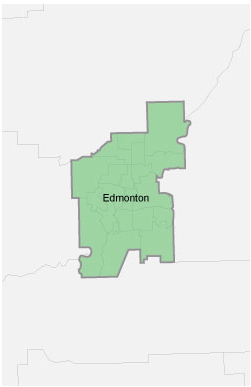Location and benefits
Why build a solar farm at E.L. Smith?
This location was selected for a number of reasons:
- The land was already owned by EPCOR, and held for future water treatment plant expansion, which removed the cost of acquiring new land. Managing costs and impacts on ratepayers is a significant part of our operating mandate. It was formerly a cultivated field, which had gone fallow and was overgrown with invasive vegetation, including noxious weeds.
- It was already fenced, so wildlife and people were not intended to use it.
As well, this location allowed the solar farm to connect directly to the treatment plant, which means:
- A direct reduction in grid energy use and greenhouse gas emissions, rather than just credits.
- The ability to reduce electricity use from the grid during peak power price periods.
- Electricity backup for the plant for a short duration.
Other benefits
Research, technology and education partnerships all require a project that combines renewables, battery storage and energy consumption at a single location.
We intend to make the solar farm a highly accessible site for research, tours and sharing of history and cultural resources including interpretive signage in a prominent location and establishing a demonstration site that will facilitate school tours and other learning opportunities.
We have also partnered with the University of Alberta and NAIT to explore other research and post-secondary learning and development opportunities.
Vegetation, wildlife and river valley land
As part of our commitment to the environment, we transferred 31.5 acres to the city for the river valley park system, resulting in a net increase of river valley park land. In addition, we:
- Preserved a wildlife corridor between the solar farm and river to a minimum 125 m at its narrowest point.
- Installed 11 wildlife cameras to monitor wildlife movement pre-construction, during construction and post-construction.
- Are restoring tree, shrub and meadow habitat outside our fence line to achieve a net habitat gain and provide additional structure and cover for wildlife movement and use.
- Are establishing a variety of endemic grass species within the fence line, specifically chosen to flower at different times of the year to attract and provide habitat for pollinators such as bees, wasps and butterflies.












